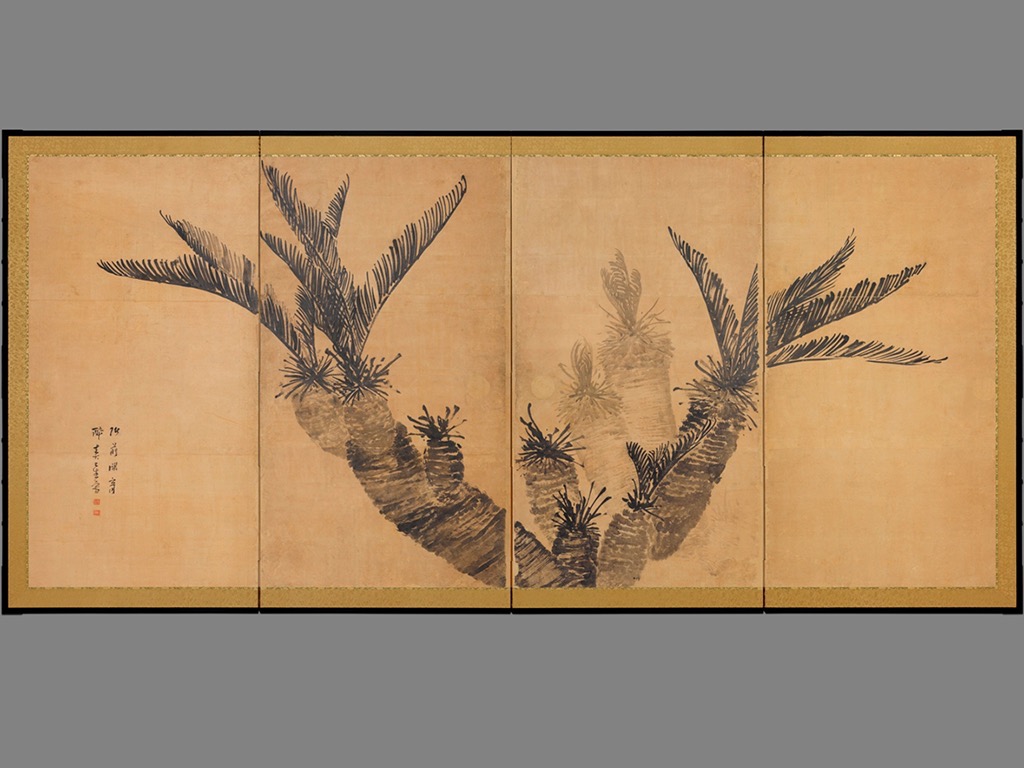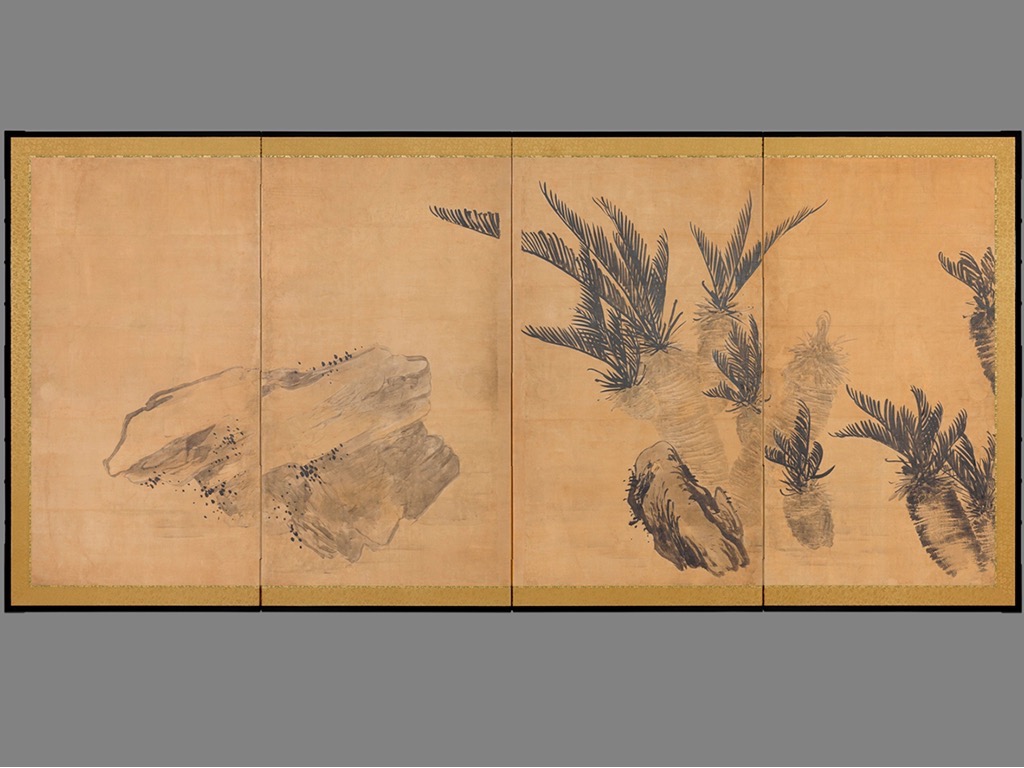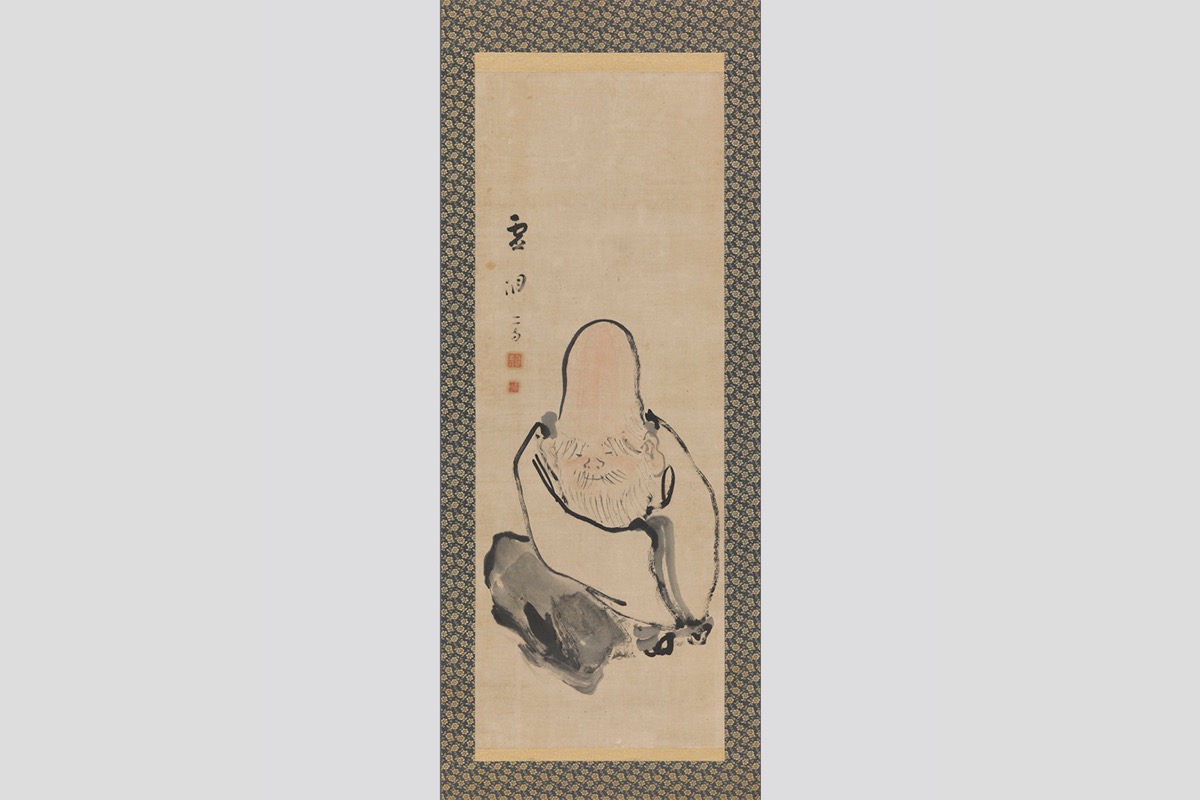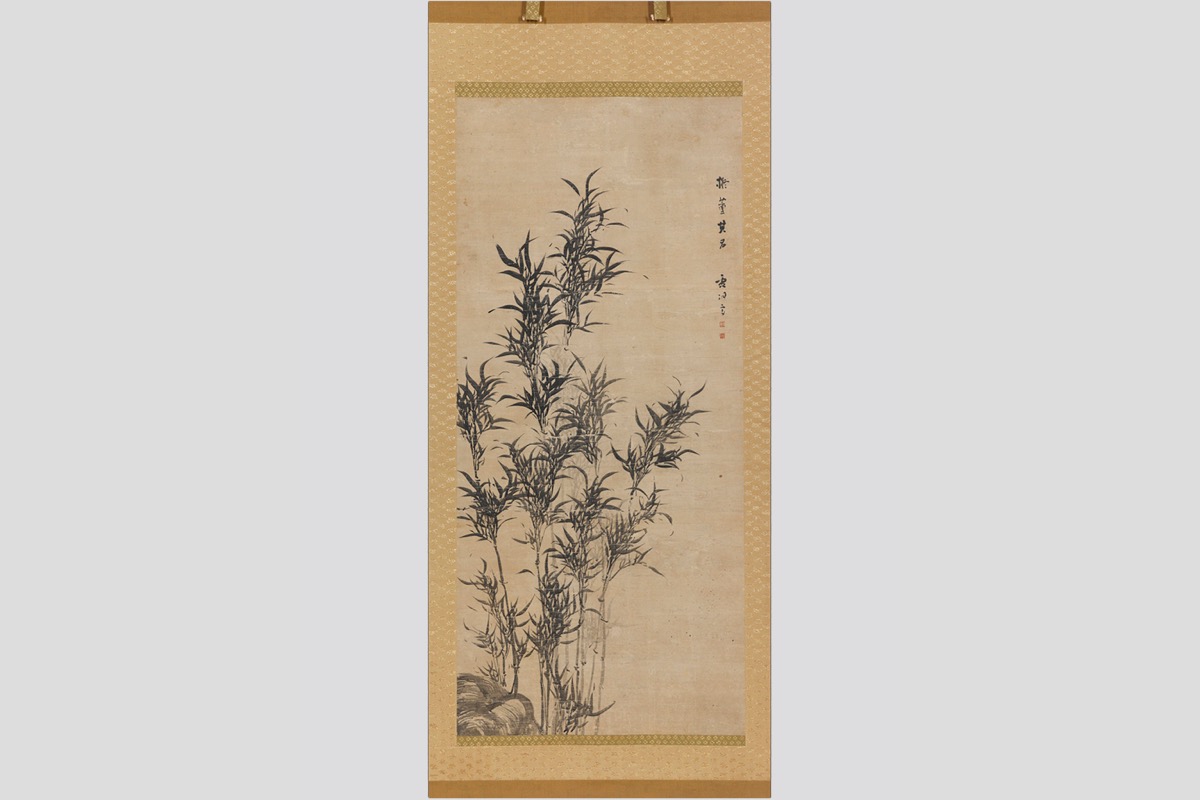Shihon Bokuga Sotetsuzu Yosabu SonhitsuSago Palm Tree (ink on paper) by Yosa Buson, on a four-panel folding screen pair; accompanied by Kanzan and Jittoku (ink wash on paper), Landscape (ink wash on paper), Landscape (ink wash on paper), Jurojin, God of Longevity (ink wash on paper), and Bamboo (ink on paper)
| District | Arts and Crafts | Period | ー |
|---|---|---|---|
| Set Content/Set Date | Important Cultural Property(Painting)・西暦1971.06.22 | ||
| Owner | Myohoji Temple | Location | 9 Tomiyamachi, Marugame, Kagawa |
Born in 1716 (Kyoho 1) in Settsu Province (now in Osaka), Yosa Buson is known as a haiku poet active during the late Edo Period (18th century), but in Japanese art history he is more important as a painter. He travelled throughout Japan, composing haiku poetry and painting many pictures. From fall of 1766 to April of 1768 (returning temporarily to Kyoto midway through), he travelled through Sanuki Province (currently Kagawa Prefecture) visiting the cities of Takamatsu, Kotohira, and Marugame. During his stay at Myohoji Temple in Marugame, he painted six works of art. Among these was the ‘”Sago Palm Tree”, originally drawn as a fusuma (sliding door) painting in the main hall of Myohoji Temple, and now turned into a folding screen. Buson’s pen name "Shusei" is signed on the painting. The sago palms painted boldly across the screen are, according to legend, depictions of palms growing in the gardens of Myohoji Temple. Buson’s excellence can be seen in how he depicts a scene using only shading, a technique he learned from Chinese-style painting. The skillful use of space and composition in the perspective of margins, cobblestones, and the sago palm, as well as the sense of life seen in the lush sago palm stubs and tender buds narrate the story of Buson’s keen appreciation of nature.




